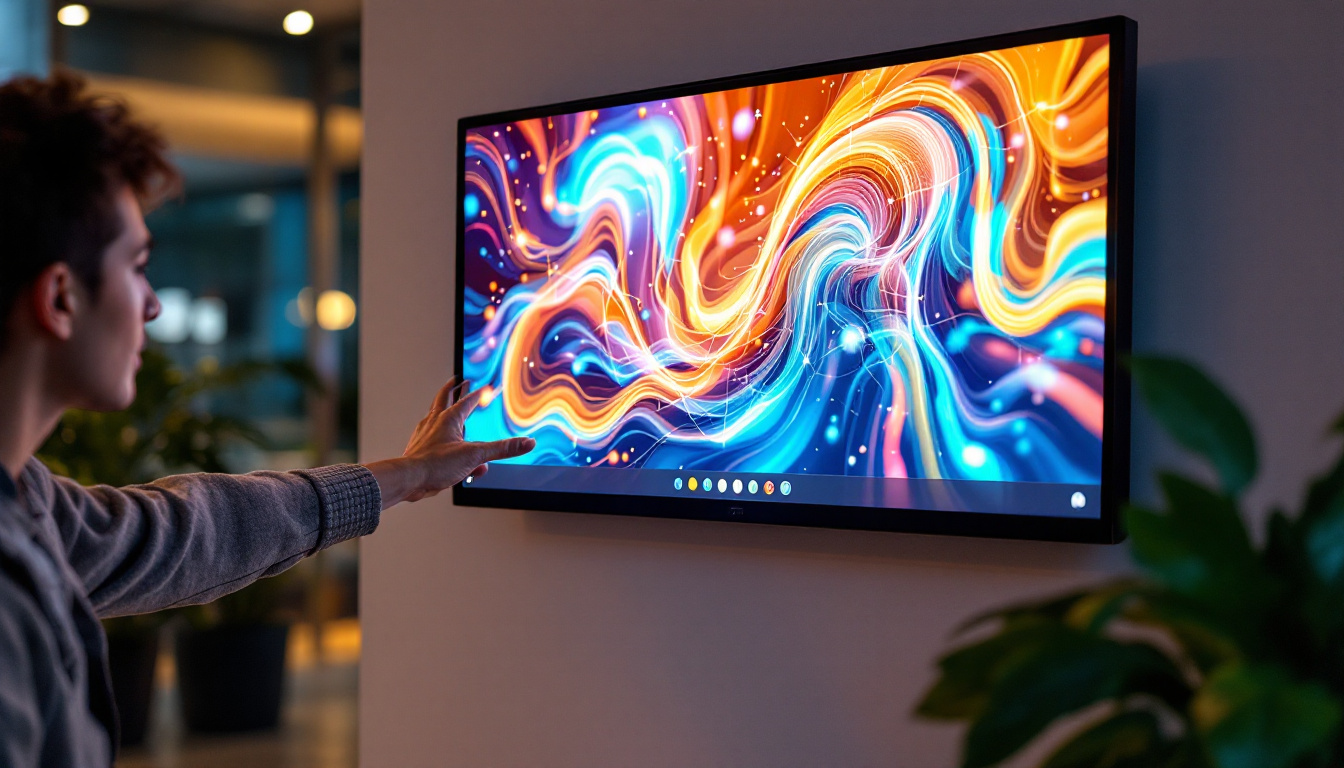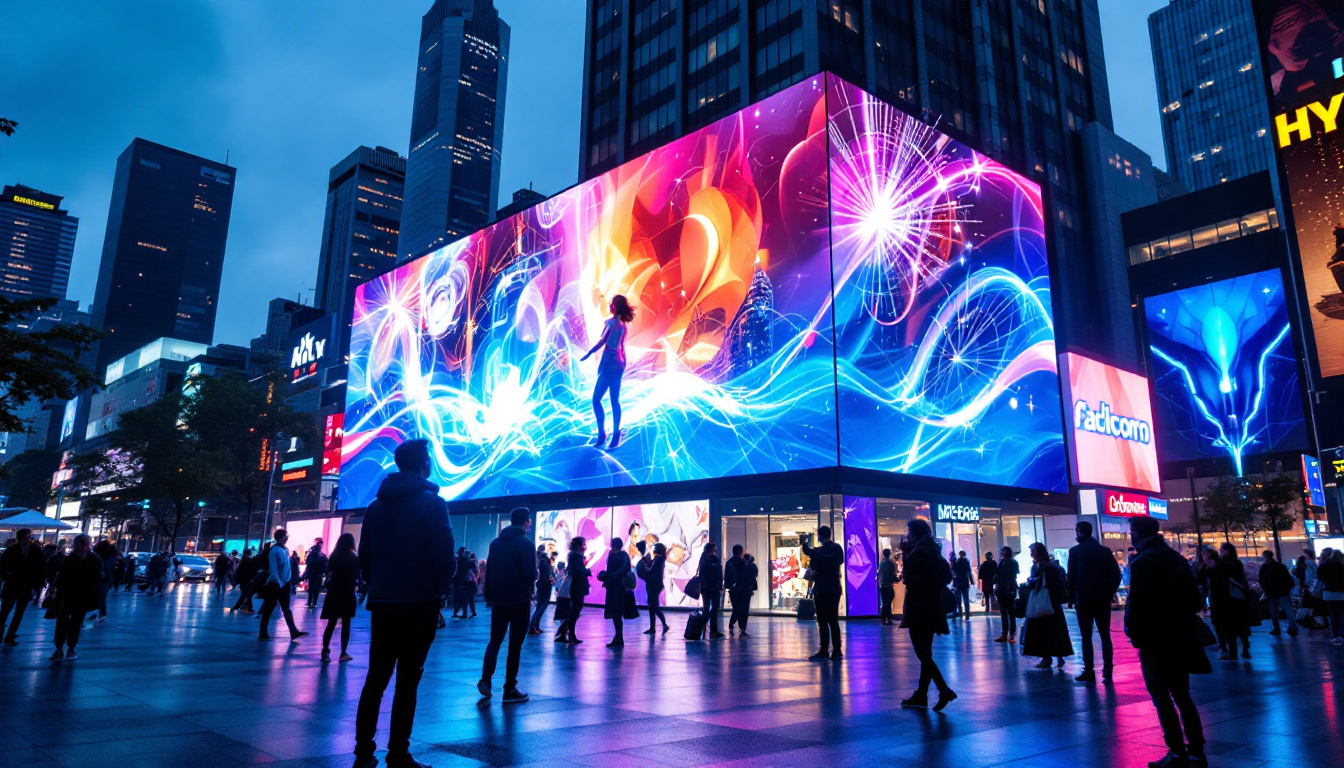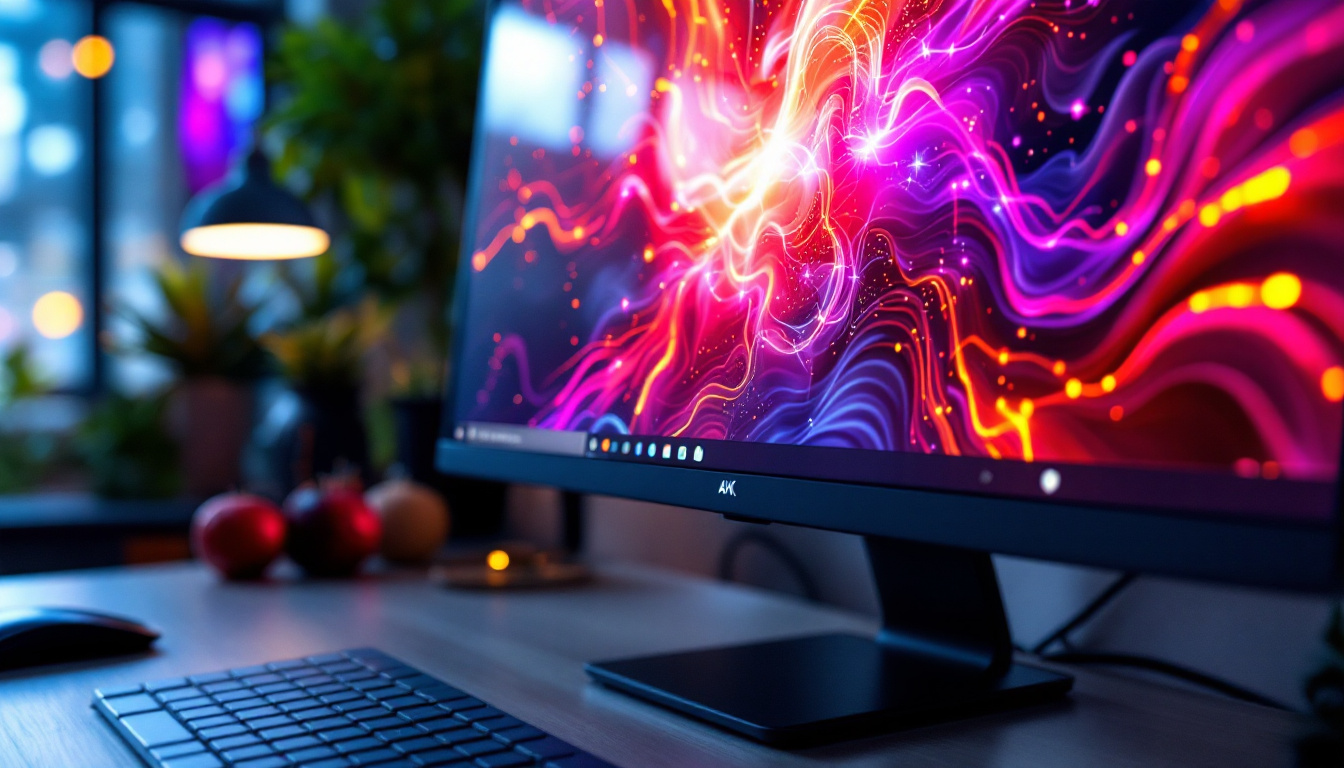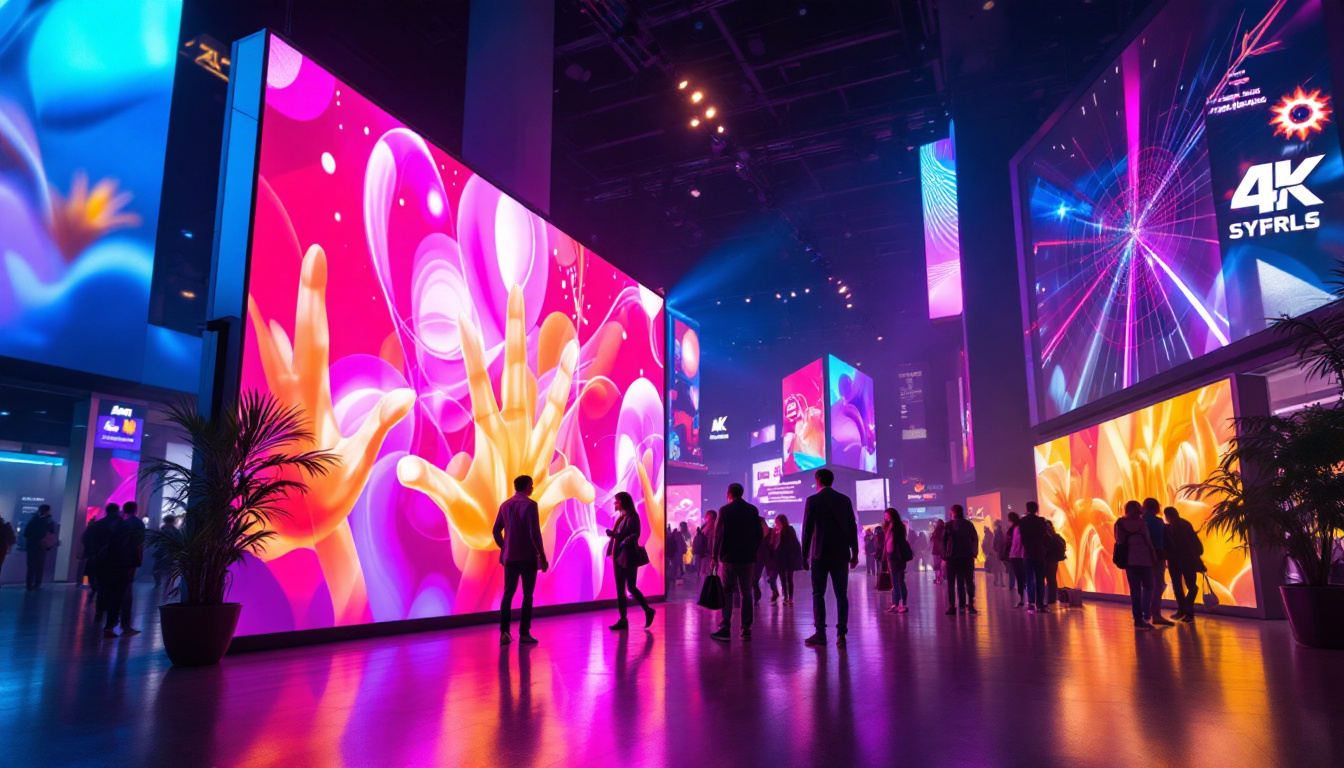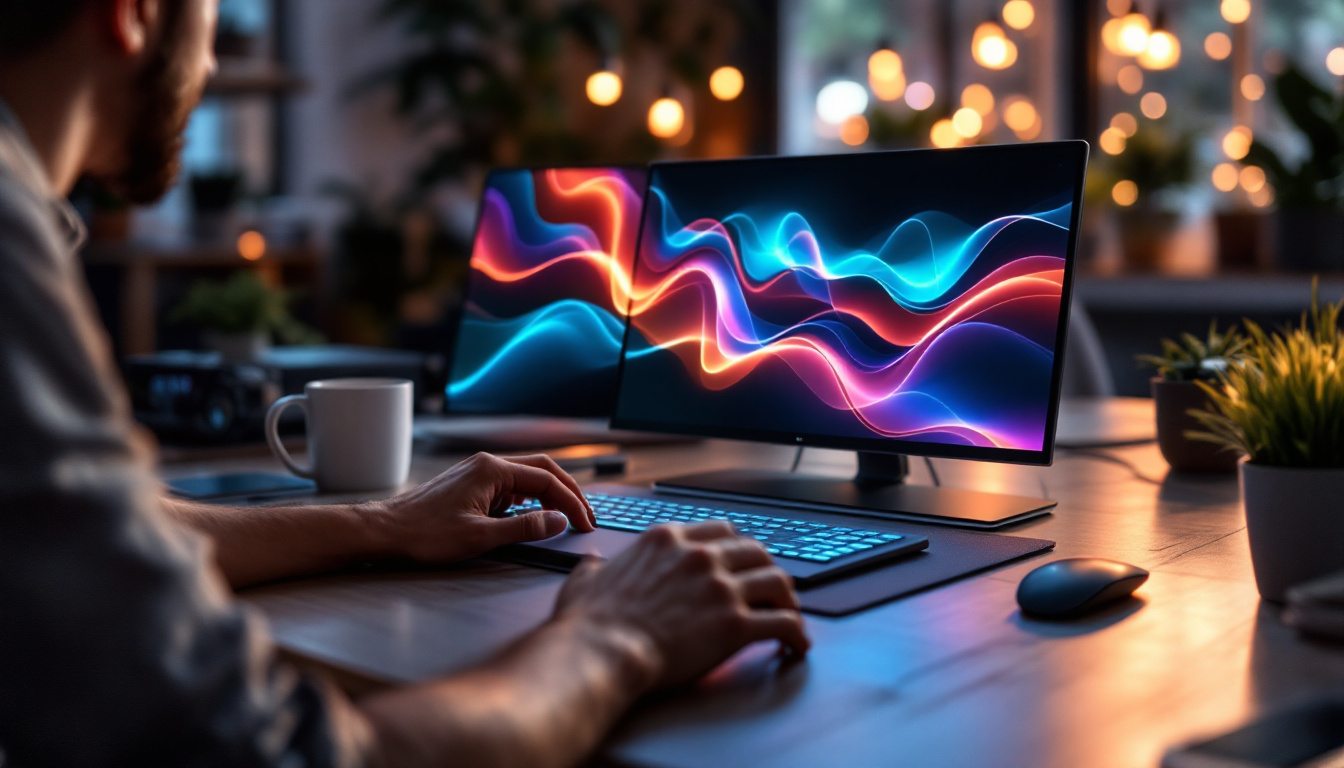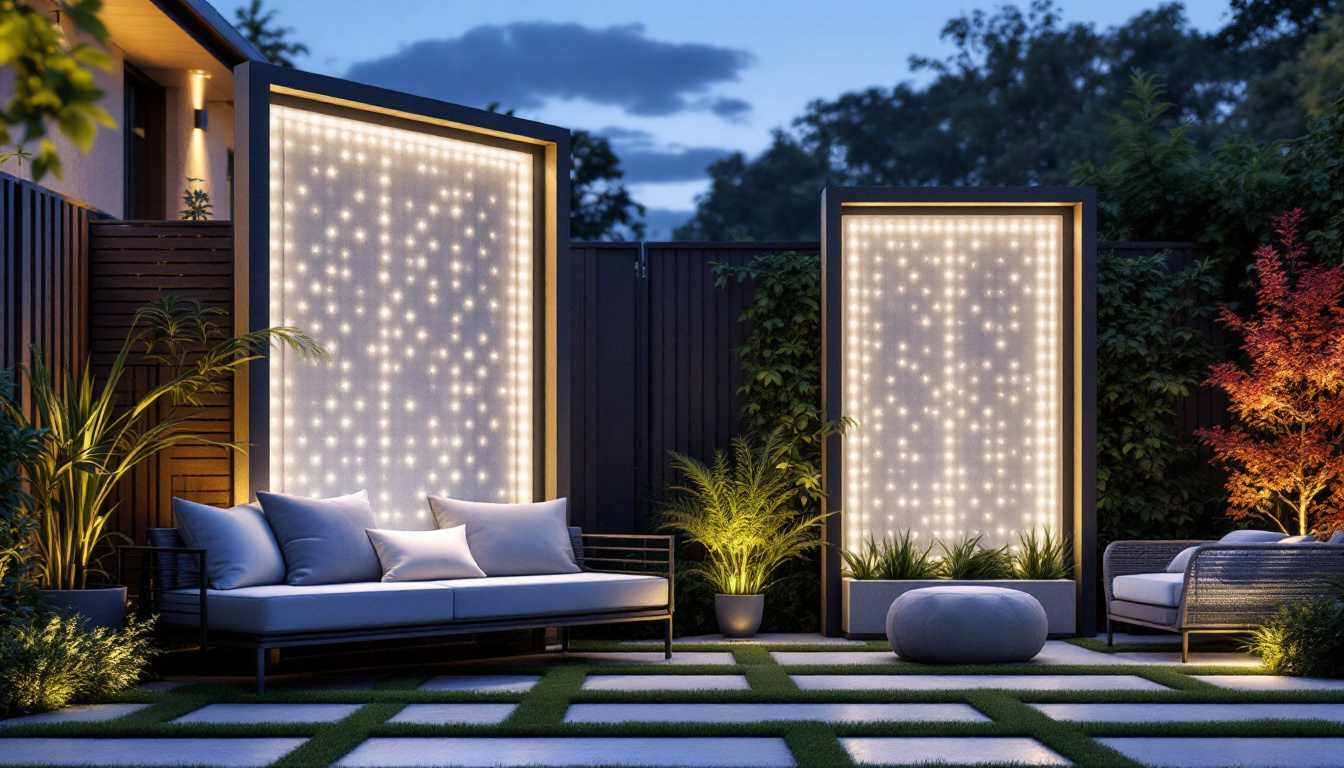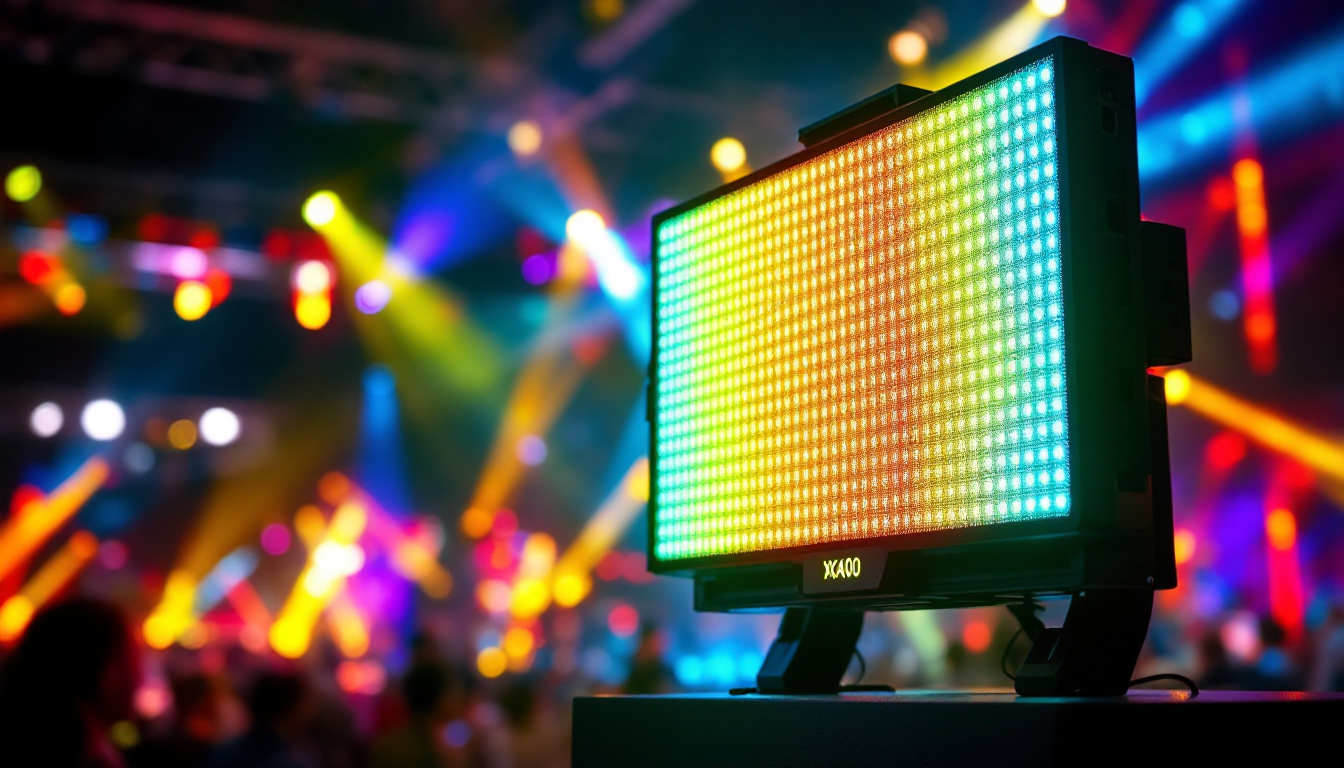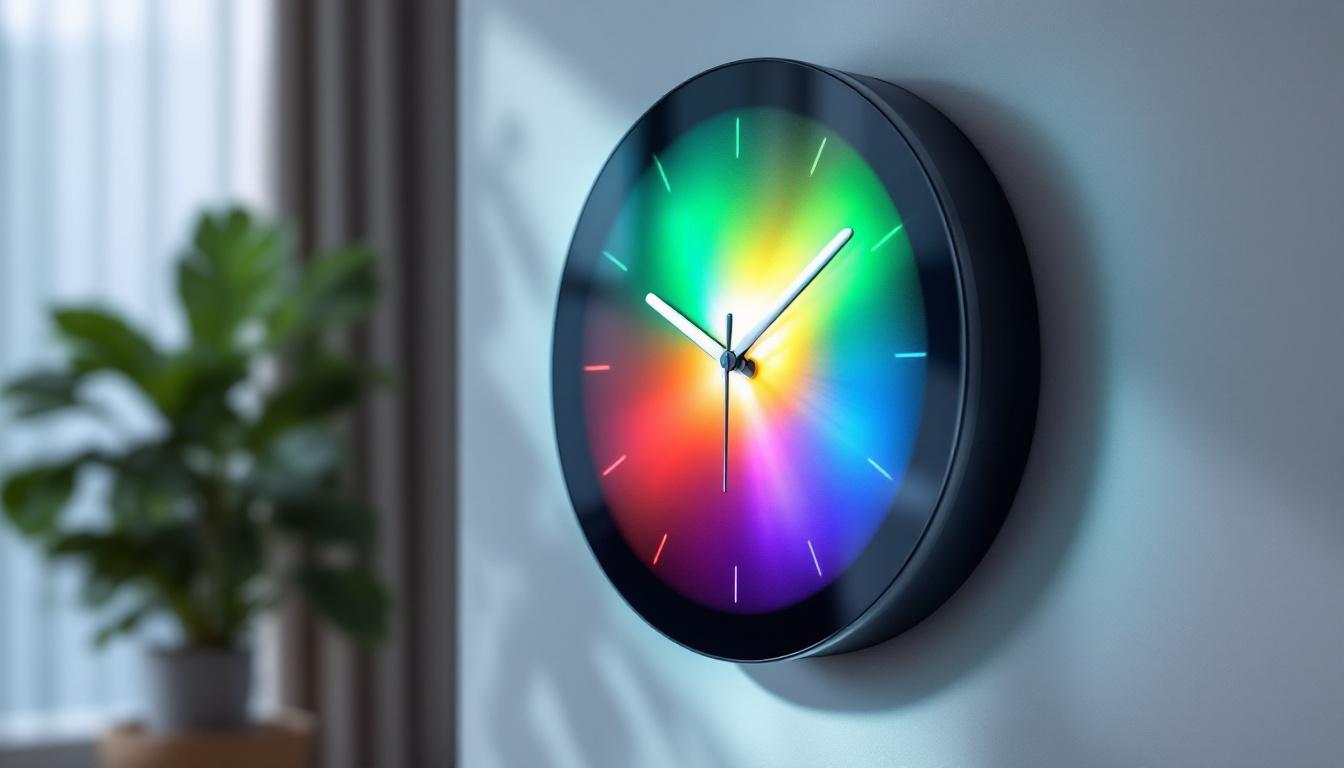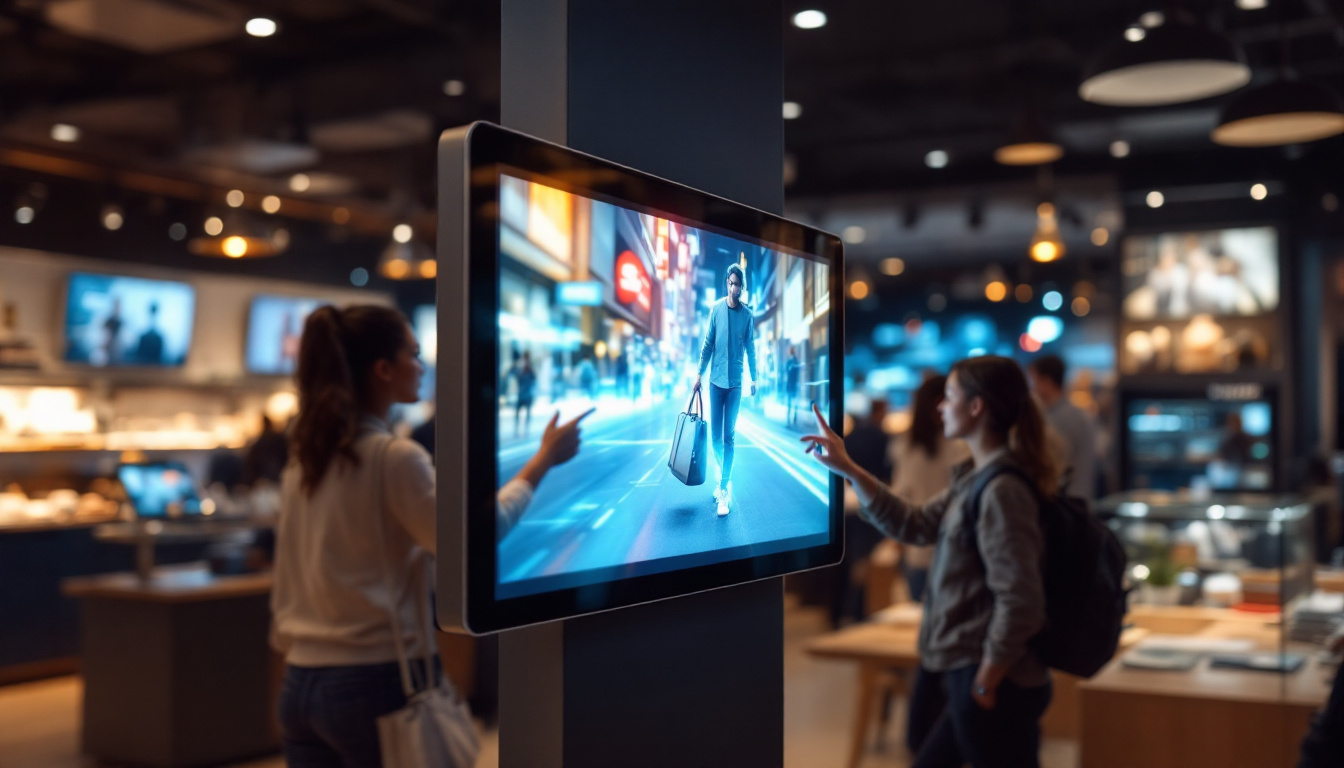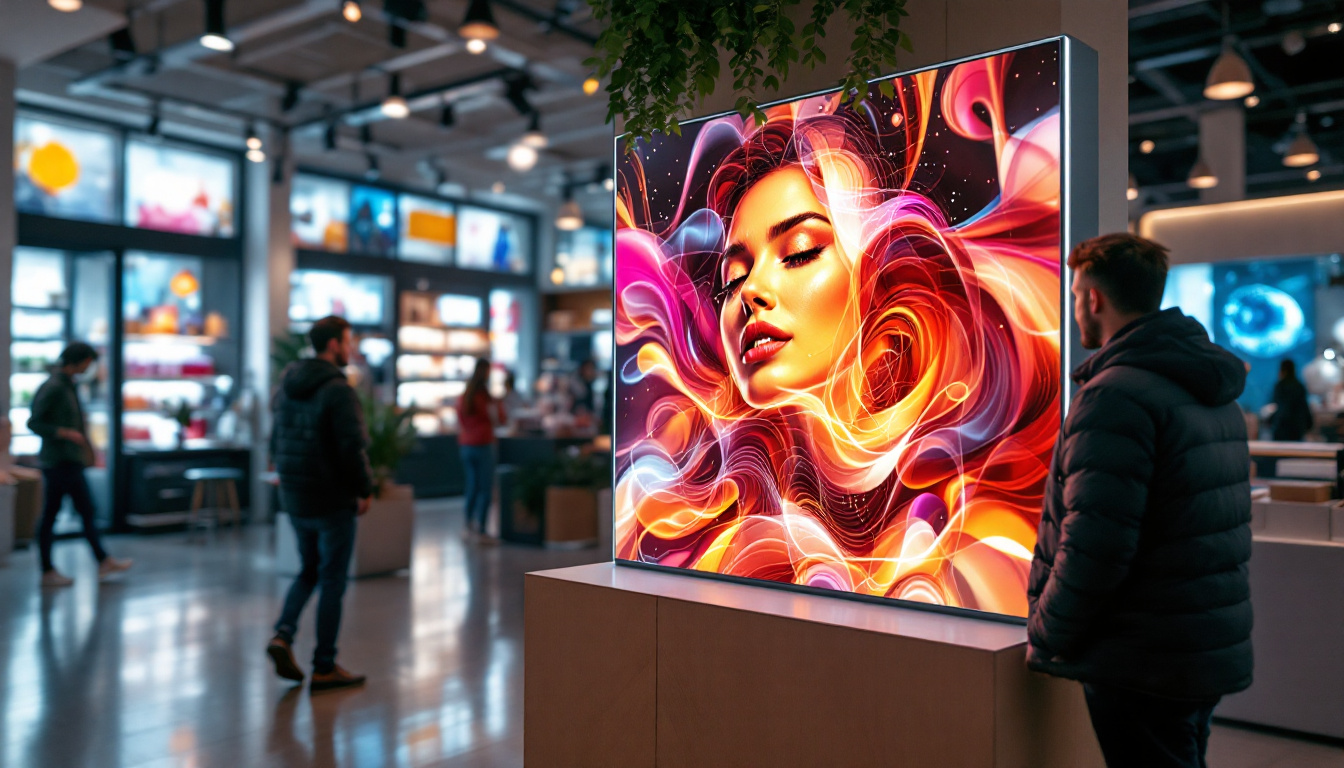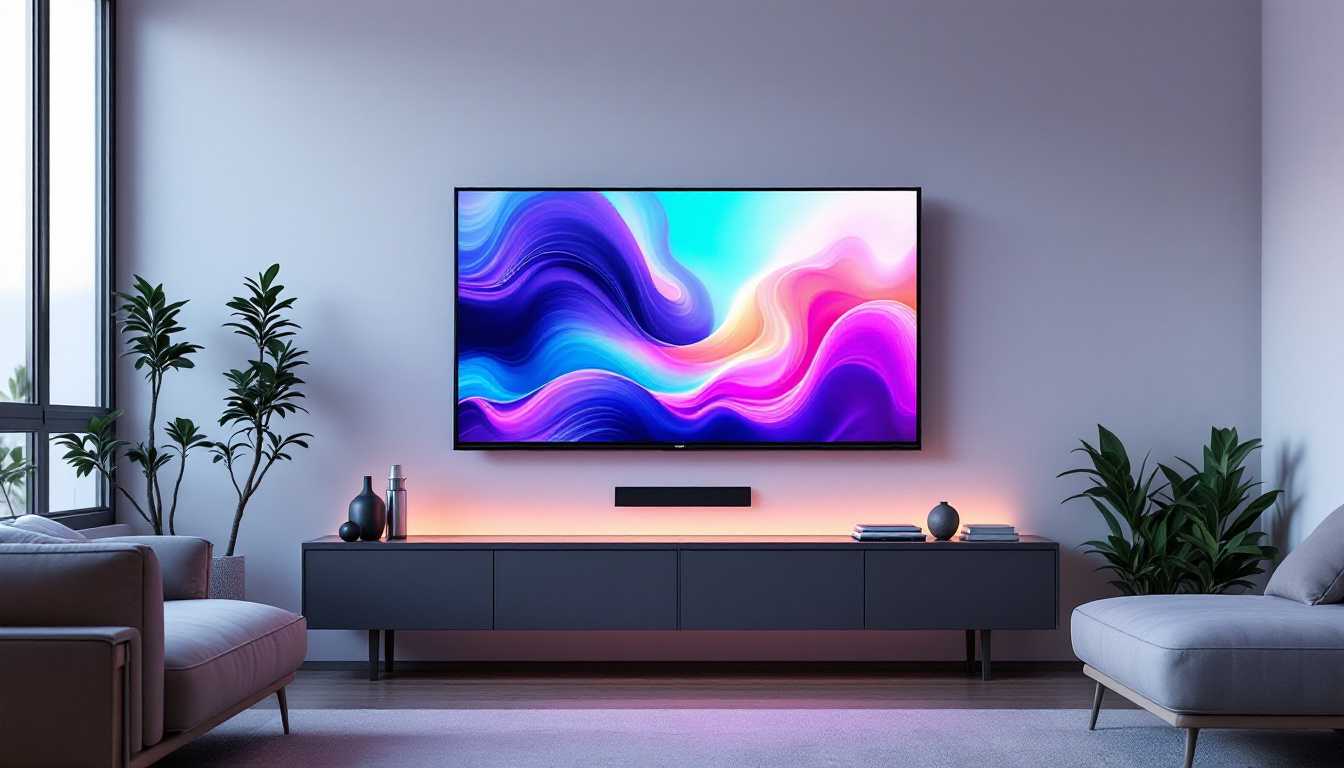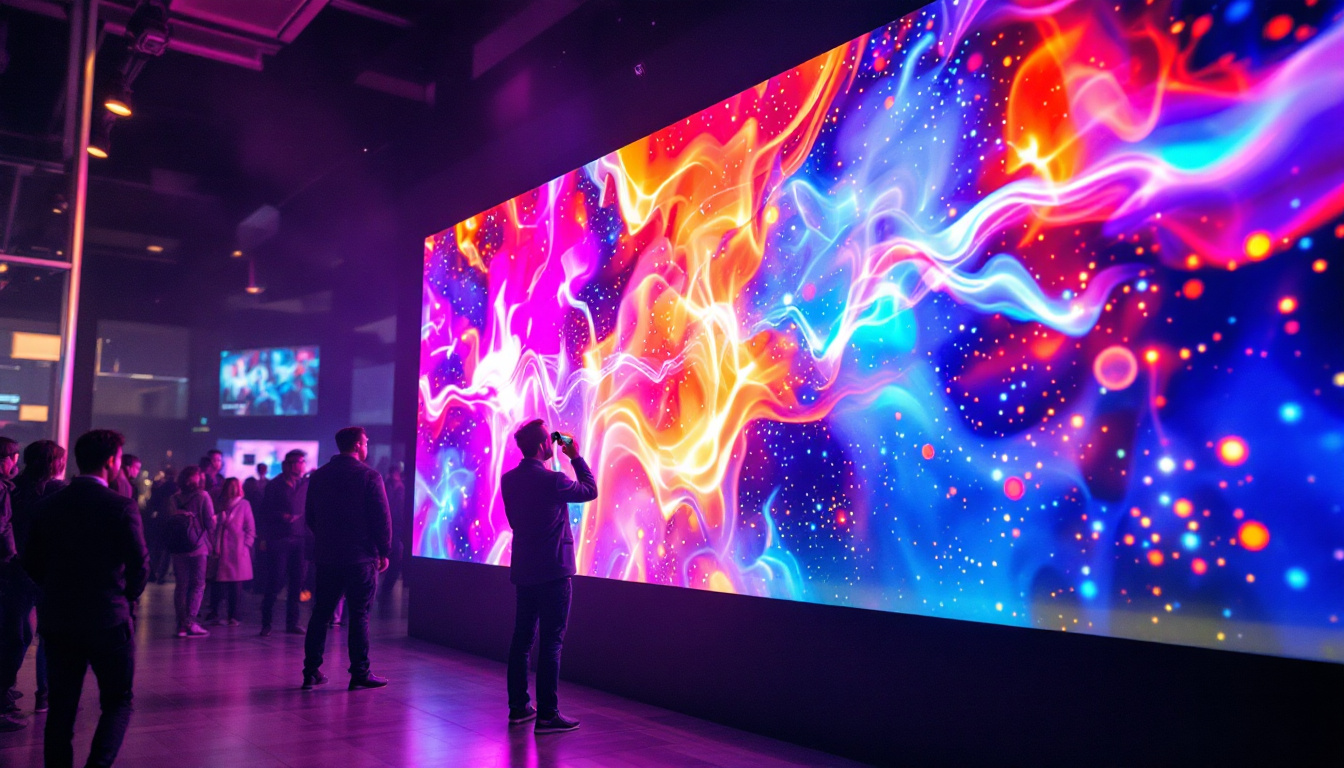In today’s fast-paced digital world, touch screen displays have become an integral part of various devices, from smartphones to large interactive kiosks. Among the different sizes available, the 32-inch touch screen display stands out for its versatility and usability. This article delves into the intricacies of LED technology, its applications, and the advantages it offers in touch screen displays.
Understanding LED Technology
LED, or Light Emitting Diode, technology has revolutionized the way displays function. Unlike traditional LCDs, which rely on backlighting, LED displays use semiconductor materials to emit light when an electric current passes through. This fundamental difference leads to several advantages, particularly in terms of brightness, energy efficiency, and color accuracy.
How LED Displays Work
At the core of LED technology is the diode, a component that allows current to flow in one direction. In an LED display, thousands of these diodes are arranged in a grid. Each diode emits light of a specific color—red, green, or blue. By combining these colors in varying intensities, a full spectrum of colors can be created, resulting in vibrant and dynamic images.
The arrangement of these diodes can vary; some displays use a direct-lit method, where the LEDs are placed behind the screen, while others utilize edge-lit technology, where LEDs are positioned along the edges. Each method has its own set of benefits and drawbacks, influencing factors such as thickness, cost, and overall picture quality. For instance, direct-lit displays tend to offer better uniformity in brightness across the screen, making them preferable for larger formats, while edge-lit displays can be thinner and more lightweight, which is advantageous for portable devices.
Advantages of LED Technology
LED displays offer numerous advantages over traditional display technologies. Firstly, they are significantly more energy-efficient, consuming less power while delivering brighter images. This efficiency not only reduces electricity costs but also extends the lifespan of the display.
Additionally, LED displays provide superior color accuracy and contrast ratios. The ability to produce deeper blacks and brighter whites enhances the overall viewing experience, making them ideal for applications where image quality is paramount, such as in graphic design or video editing. Furthermore, the rapid response time of LEDs allows for smoother motion rendering, which is particularly beneficial in high-speed video playback or gaming scenarios. This capability minimizes motion blur and ghosting, ensuring that fast-moving images remain sharp and clear, thus enhancing the overall enjoyment of visual content.
Moreover, LED technology is highly adaptable, allowing for a variety of applications beyond standard screens. From large-scale outdoor billboards to flexible displays that can be curved or shaped to fit unique spaces, the versatility of LED technology opens up new possibilities for creative installations. This adaptability has led to a surge in the use of LED screens in public spaces, entertainment venues, and even in architectural designs, where they can transform the aesthetics of buildings and urban environments.
Applications of 32-Inch Touch Screen Displays
The 32-inch touch screen display is particularly popular due to its size, which strikes a balance between usability and portability. This size is ideal for a variety of applications, ranging from educational environments to retail settings.
Educational Use
In educational institutions, 32-inch touch screen displays serve as interactive tools that facilitate learning. Teachers can use these displays to present information in a dynamic way, engaging students through interactive lessons and multimedia presentations. The touch functionality allows for real-time participation, enabling students to interact with the content directly.
Moreover, these displays can be used for collaborative projects, where multiple students can work together on a single screen. This fosters teamwork and enhances the learning experience, making education more engaging and effective. Beyond traditional subjects, educators can incorporate gamified learning experiences that leverage the touch capabilities, turning lessons into interactive games that captivate students’ attention and motivate them to learn. Furthermore, the integration of educational software and applications designed specifically for touch screens can provide personalized learning paths, allowing students to progress at their own pace while receiving immediate feedback.
Retail and Marketing
In the retail sector, 32-inch touch screen displays are increasingly being used for digital signage and interactive kiosks. They provide an effective platform for showcasing products, promotions, and information. Customers can interact with the display to learn more about products, check prices, or even place orders.
The ability to update content remotely ensures that retailers can keep their displays fresh and relevant, adapting to seasonal changes or new product launches without the need for physical alterations. This flexibility is crucial in maintaining customer interest and driving sales. Additionally, these displays can be enhanced with features such as augmented reality (AR), allowing customers to visualize products in their own space or see how different items might look together. This immersive experience not only boosts customer engagement but also aids in reducing return rates, as consumers can make more informed purchasing decisions. Retailers can also gather valuable data on customer interactions with the displays, using this information to refine marketing strategies and improve overall customer satisfaction.
Healthcare Applications
In healthcare settings, 32-inch touch screen displays can be utilized for patient information systems, allowing healthcare professionals to access and input data with ease. The intuitive touch interface simplifies navigation, making it easier for staff to retrieve critical information quickly.
Additionally, these displays can be used in waiting areas to provide patients with information about services, wait times, and health tips, contributing to a more informed and engaged patient experience. They can also serve as educational tools, displaying videos or interactive content about various health conditions, treatment options, and preventive care measures. This not only empowers patients with knowledge but also helps to alleviate anxiety by providing clarity about their healthcare journey. Furthermore, touch screen displays can facilitate telehealth consultations, enabling patients to connect with healthcare providers remotely, thus expanding access to care and improving convenience for those with mobility challenges or those living in remote areas.
Key Features to Consider
When selecting a 32-inch touch screen display, several key features should be taken into account to ensure that it meets specific needs and requirements.
Resolution and Picture Quality
The resolution of a display is a critical factor that influences picture quality. Higher resolutions, such as Full HD (1920 x 1080) or 4K (3840 x 2160), provide sharper images and more detail. For applications that require high-definition visuals, investing in a display with a higher resolution is advisable.
Furthermore, consider the display’s brightness levels, measured in nits. A higher brightness level is essential for environments with significant ambient light, ensuring that the content remains visible and engaging.
Touch Technology
Different touch technologies are available, including resistive, capacitive, and infrared. Capacitive touch screens are generally preferred for their responsiveness and multi-touch capabilities, making them ideal for interactive applications.
It is also important to consider the durability of the touch screen. Displays designed for high-traffic areas should have protective features, such as tempered glass, to withstand frequent use and potential damage.
Connectivity Options
Connectivity is another crucial aspect to evaluate. A versatile display should offer multiple connectivity options, including HDMI, USB, and VGA ports, to accommodate various devices. Wireless connectivity options, such as Wi-Fi and Bluetooth, can also enhance usability by allowing for seamless integration with other technologies.
Furthermore, consider the compatibility of the display with different operating systems and software applications, ensuring that it can be easily integrated into existing systems.
Installation and Maintenance
Proper installation and maintenance of a 32-inch touch screen display are essential for optimal performance and longevity. Understanding the installation process and routine maintenance can help maximize the investment.
Installation Considerations
When installing a touch screen display, it is important to choose the right location. The display should be positioned at an appropriate height and angle to facilitate comfortable interaction. Additionally, ensuring that the display is securely mounted can prevent accidents and damage.
Consideration should also be given to the surrounding environment. For instance, displays used in outdoor settings may require weatherproof casings, while those in brightly lit areas might need anti-glare screens to enhance visibility.
Routine Maintenance
Regular maintenance is vital to keep the display functioning optimally. This includes routine cleaning to remove dust and fingerprints, which can obscure visibility and affect touch sensitivity. Using appropriate cleaning solutions and materials is crucial to avoid damaging the screen.
Additionally, periodic software updates may be necessary to ensure compatibility with new applications and features. Keeping the display’s firmware up to date can enhance performance and security.
Future Trends in Touch Screen Displays
The technology behind touch screen displays continues to evolve, with several trends emerging that promise to shape the future of this industry.
Advancements in Touch Technology
Future advancements in touch technology may include enhanced multi-touch capabilities and improved gesture recognition. These developments will allow for more intuitive interactions, making touch screens even more user-friendly and efficient.
Moreover, innovations such as haptic feedback technology could provide users with tactile responses when interacting with the display, further enhancing the experience and making it feel more natural.
Integration with AI and IoT
As artificial intelligence (AI) and the Internet of Things (IoT) continue to grow, touch screen displays are likely to become more integrated with smart technologies. This could enable features such as voice recognition and smart home control directly from the display, creating a seamless user experience.
For instance, in smart retail environments, displays could analyze customer behavior in real-time, adjusting content based on preferences and interactions, thereby enhancing engagement and sales.
Eco-Friendly Innovations
With increasing awareness of environmental issues, future touch screen displays may focus on sustainability. This could involve the use of eco-friendly materials in manufacturing and energy-efficient technologies that reduce power consumption.
Additionally, recycling programs for old displays may become more prevalent, encouraging responsible disposal and reducing electronic waste.
Conclusion
The 32-inch touch screen display represents a significant advancement in display technology, combining the benefits of LED with interactive capabilities. Its versatility makes it suitable for a wide range of applications, from education to retail and healthcare.
As technology continues to evolve, the future of touch screen displays looks promising, with advancements in touch technology, integration with AI, and a focus on sustainability. Understanding the features, applications, and maintenance of these displays can help users make informed decisions, ensuring they harness the full potential of this innovative technology.
In conclusion, whether for personal use or in a professional setting, the 32-inch touch screen display is an investment that offers both functionality and engagement, paving the way for a more interactive and connected future.
Discover LumenMatrix’s Interactive LED Solutions
Ready to experience the future of interactive display technology? LumenMatrix is at the forefront of LED innovation, offering a diverse range of LED display modules tailored to your needs. Whether you’re looking to enhance educational engagement, elevate your retail space, or streamline healthcare communication, our solutions like Indoor and Outdoor LED Wall Displays, Vehicle LED Displays, and more, are designed to captivate and communicate effectively. Don’t miss the opportunity to transform your space with our cutting-edge displays. Check out LumenMatrix LED Display Solutions today and step into a world of vivid imagery and interactive possibilities.

